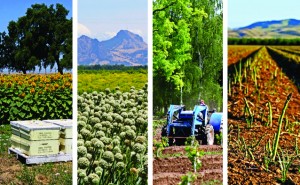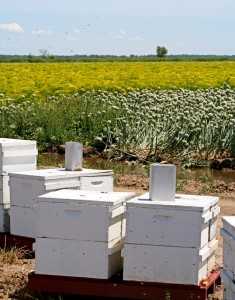Tamarixia radiata is a wasp about half the size of a chocolate sprinkle. Innocuous to humans, it is a lethal threat to the Asian citrus psyllid. The psyllid is a feared pest in California because it can carry Huanglongbing, a disease that kills citrus and has devastated crops elsewhere in the United States and the world. California citrus is a $2 billion-per-year industry.
A Huanglongbing-infected tree was discovered recently in Hacienda Heights, four years after the psyllid was first found in Southern California. The pest already is widespread in the region, and scientists believe more damaged trees will be identified. The disease blocks nutrient movement in the trees, leading to yellow leaves and fruit that remains green. No treatment has been found.
UC Riverside researchers began releasing the parasitic Tamarixia wasp, one of the psyllid’s few natural enemies, late last year. They have found three sites — two in Fontana, one in San Bernardino — where the wasp has attacked psyllid larvae, killing them.
Mark Hoddle is a biological control specialist at UCR and is in charge of the field work with the wasp. He and his wife, Christina, traveled to Pakistan several times over a two-year period to track down and identify the wasp, bring it back to Riverside and, after extensive quarantine studies, breed it for release. The wasp’s sole prey is the psyllid.
“We’re trying to understand how big an impact this wasp is having on the Asian citrus psyllid,” Hoddle said. “It’s too early to make estimates, but (the finds are) encouraging.”
John Gardner, agricultural commissioner for San Bernardino County, said he was pleased to hear about the finds.
“I didn’t know they’d done the releases in my county,” Gardner said. “It’s a nice surprise. Anytime you can get a parasite like this established and it shows signs of it being able to reproduce, that’s a real good sign.”
Gardner said the finds would not affect the quarantine restrictions, which currently include all of Los Angeles, Orange and Imperial counties and portions of San Bernardino, Riverside and San Diego counties.
But a growing population of Tamarixia “will go a long way towards preventing any disease transmission, which is where the real threat lies,” he said.
Hoddle and his team found the hollowed-out remains of Asian citrus psyllid larvae on the leaves of residential citrus trees — the wasp larvae eat the psyllid larvae from inside and leave the shell. In addition to the Fontana and San Bernardino sites, the team has found similar evidence in Pomona, Azusa and Pico Rivera.
“At our Pico Rivera site,” Hoddle said, “not only did we find it at the release site, but 0.2 miles away.”
It’s a short distance for humans, but a huge expanse for the tiny wasp.
“For it to have spread that far on its own suggests two possibilities,” Hoddle said. “The first is that the wind blew it down that far, or that it’s leapfrogging through backyards, which is what we’d like to see.”
Hoddle has two worries about the wasps. The first is whether the insect can endure the Southern California winter and pick up its work again in the spring, as Hoddle believes they will. The second is the ants.
Argentine ants, themselves an invasive species, have been discovered farming the sugary waste the larval psyllid nymphs produce. They’ve also been seen going after the Tamarixia wasps when they show up and try to lay their eggs on the nymphs.
Hoddle said he observed an ant actually snatch a wasp out of the air.
“I saw one catch one just as it was taking off,” he said. “They could be quite a problem for us.”
It also shows just how deep the invasive species problem goes in Southern California.
“This is one invasive species facilitating the establishment of another invasive species,” he said. “We call this an invasive meltdown.”
Now, Hoddle and his team are looking for ways to control the ants. It’s another step in what he knows will be a long process. And right now that process is focused on treating infested residential areas. Commercial groves are being treated with pesticide, which kills the psyllid as well as the wasps.
Hitting residential areas with the wasp, Hoddle said, “will reduce the number of psyllids flying into the commercial zones.”
Eventually, he said, that could reduce or eliminated the need to spray pesticides.
Even if the program turns out to be a success, he said, it will be a long journey.
“This is something that just doesn’t happen overnight.”








